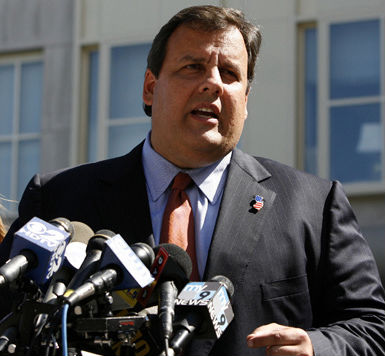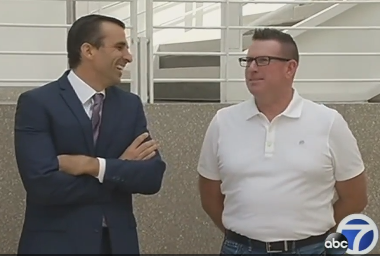 Leo Kolivakis is a blogger, trader and independent senior pension and investment analyst. This post was originally published at Pension Pulse.
Leo Kolivakis is a blogger, trader and independent senior pension and investment analyst. This post was originally published at Pension Pulse.
Barbara Shecter of the National Post reports, CPPIB eyeing global investments, even as ‘difficult’ conditions push fund to losses:
The Canada Pension Plan Investment Board is continuing to pursue global investments, including a large transaction in Asia, even though declines in major global equity and fixed income markets hammered the returns of the CPP Fund in the first quarter of the fiscal year.
A $4-billion increase in assets came entirely from $4.2 billion in CPP contributions as the fund posted a net investment loss of $0.2 billion during the period that ended June 30.
“In a quarter where everything essentially went against us, to be flat is… a pretty good outcome,” said Mark Wiseman, chief executive of CPPIB, which invests funds that are not needed by the Canada Pension Plan to pay current benefits.
“Amid these difficult market conditions, our private investment programs generated meaningful income, exemplifying the benefits of building a resilient, broadly diversified portfolio.”
Wiseman said his team is able to continue pursuing investments around the world, including one he described as “a large transaction is Asia,” because the fund’s size and scale and diversification, and a long-term investment horizon, provide stability in these volatile times.
“Our comparative advantages, given the choppy market conditions, are coming to the fore,” he told the Financial Post.
“At some level, volatility is our friend. In conditions like this, we are able to transact and continue to diversify and build our portfolio [when] others are running in the opposite direction.”
At the end of the quarter, public equities accounted for just shy of 32 per cent of the asset mix, with fixed income at about 33.5 per cent.
Private equities sat at just under 18 per cent, with the balance in real assets (real estate and infrastructure).
The CPP Fund’s 10-year annualized real rate is return, accounting for the impact of inflation, is 5.8 per cent.
In 2012, Canada’s Chief Actuary said the Canada Pension Plan would be sustainable for 75 years at current contribution rates with a real rate of return of 4 per cent.
Returns over the past decade are “comfortably above” that assumption, CPPIB said Friday, adding long-term returns are a “more appropriate measure of CPPI’s performance than returns in any given quarter or single fiscal year.”
Also, Judy McKinnon and Rita Trichur of the Wall Street Journal report, Canada’s largest pension fund posts small negative return:
Canada Pension Plan Investment Board, the country’s largest pension fund, on Friday reported a negative net return of 0.1% for its fiscal first quarter, citing in part declines in major global stock and bond markets.
CPPIB said it had C$268.6 billion ($205.6 billion) of net assets under management in the quarter ended June 30, up slightly from C$264.6 billion at the end of its previous quarter on March 31.
CPPIB said the C$4 billion increase included a net investment loss of C$200 million, after taking into account its operating costs, and C$4.2 billion in pension contributions.
“Going forward, we are expecting to continue to see volatility in markets generally, in both fixed-income market and equity markets,” said chief executive Mark Wiseman. But that turbulence is also creating potential opportunities for CPPIB, he said.
“From an investment perspective, volatility is our friend,” Wiseman said, noting CPPIB’s scale and long-term investment horizon mean the organization can “continue to invest and diversify the portfolio across asset classes and across geographies”.
It has already been a busy year on the investment front. In June, CPPIB announced plans to acquire General Electric’s unit in private equity lending, which includes Antares Capital, in a deal worth about $12 billion. CPPIB has said Antares Capital will keep its name and operate as a stand-alone business.
The transaction is on track to close during the current quarter, said Wiseman. “With the Antares transaction, we’re extremely pleased with the quality of the team that we’ve acquired.”
Earlier in the day, CPPIB said its gross investment return in the period was flat at 0.01%.
CPPIB measures its performance on an annual basis against an internal benchmark based on returns from a mix of asset classes, but it doesn’t provide quarterly returns for that index.
In its latest fiscal year ended in March, it posted an 18.3% net return, outperforming its internal benchmark return of 17%.
CPPIB, which focuses on investments that generate steady returns over the long term to help fund its pension liabilities, said it had more than 25 investments during the latest quarter.
I’ve already covered CPPIB’s acquisition of GE’s private equity lending business and think it’s a great deal, perhaps the deal of the century for a large Canadian pension fund (it has risks but the benefits far outweigh these risks over the very long run).
CPPIB has been very busy lately, buying five U.K. student residences with 2,153 beds for $672 million and venturing into the Malaysian real estate business for the first time. The IPO of Neiman Marcus, a U.S. luxury retailer, will also help Canada’s largest pension fund boost its return.
As far as the slight negative quarterly return, I simply don’t pay attention to this stuff. It’s trivial and meaningless for a large pension fund that has a very long investment horizon and long dated liabilities.
I can say the exact same thing for the Caisse which recently reported its mid-year update as of June 30th, posting a six-month return of 5.9%. The media loves making a big stink on these quarterly and mid-year updates but I ignore them for the simple reason that what matters is fiscal or calendar year results over a one and more importantly, four, five and ten year period.
And Michael Sabia, the Caisse’s CEO, warned of global turbulence ahead as the fund topped benchmarks in first half:
The Caisse de dépôt et placement du Québec exceeded its six-month benchmark portfolio return in the first half of 2015, but says it sees warnings of a stormy global economic environment in the months and years to come.
“We see signs that cause us to wonder… about whether a slowdown in global growth is what we expect to see,” CEO Michael Sabia said Friday following an update of the Caisse’s yearly activities to June 30.
“It’s not time to go to the beach,” Sabia said. “It’s time to double down, lift our game, continue to outperform our reference portfolio and continue to try to do better on the market.”
Quebec’s largest institutional investor generated $1.7 billion more than projected in the first six months of 2015, with a 5.9 per cent return on clients’ funds, compared to its 5.2 per cent benchmark portfolio return.
The fund’s assets sit at $240.8 billion, up from $225.9-billion at the end of 2014.
“We think against a pretty volatile backdrop the portfolio of La Caisse has performed well with a substantial amount of value added,” said Sabia.
The CEO said he can’t predict whether this performance will continue over the second half of 2015 in an environment of growing economic and geopolitical risks.
“In the near term almost anything can happen. Markets fluctuate and this can happen on the basis of any number of things, some of them quite unseen at any particular time,” he said. “We’re not in the position to predict on a short-term basis and we don’t try to.”
The Caisse manages several large Quebec pension plans, and Sabia said it targets about a six per cent return to its depositors.
It reported a 10.2 per cent return over the past four years, adding $75 billion to its assets.
Sabia said meeting that same level of growth could prove challenging in the next four years, citing concerns over high asset valuation, a lack of central bank stimulus options and heavy indebtedness among Western countries.
“After such a long period of expansion in the market, how long is this going to continue?” he said.
“When we look across the global economy, we don’t see any big engines capable of accelerating global growth.”
Sabia says that although even the United States is showing only moderate economic growth, the Caisse is inline to make substantial investments there involving government on a municipal, state and federal level.
“I won’t go further than to say we are very upbeat about the opportunities we have in the U.S.,” he said.
The Caisse reports that over the past six months, each asset class in its portfolio generated a return above its index.
Equities returned 7.8 per cent with net investment results of $8.3 billion, while fixed income had a 2.7 per cent return, generating $2.1 billion.
Inflation-sensitive investments recorded a 4.6 per cent return, generating net investment results of $1.6 billion.
In the first half of the year, the Caisse acquired stakes in the Eurostar high-speed rail operator, and in Southern Star Central Corp., a natural gas pipeline operator in the U.S.
It also invested in the U.K. telecoms sector, SterlingBackcheck, one of the world’s largest background screening companies, and SPIE, a European engineering firm.
In Quebec, the Caisse invested in companies including Cirque du Soleil and Logistec, and launched an infrastructure subsidiary to work on projects in the Montreal area.
“The duck may look calm going across the lake, but I can assure you that there is a great deal of activity underway under the waterline,” said Sabia.
I like Michael Sabia, he’s a smart guy and hard worker who really learned a lot over the last five years, but I ignore his big calls on stocks and bonds. I can say the same thing about Leo de Bever, AIMCo’s former CEO, who is a very smart guy but made terrible market calls, especially on bonds.
To be fair to both of them, even the “best and brightest” continue to be confounded by the bond market because they simply don’t understand the Fed’s deflation problem or where the real risks lie in the bond market going forward. They all need to listen to the bond king’s dire warning and ignore hedge fund gurus claiming bonds are the bigger short.
In fact, some see oil heading as low as $15-$20 a barrel in the months ahead and the yield on U.S. Treasuries dropping a low as 1% on further yuan devaluation, fueling the rout in commodity prices and driving investors to seek safety in U.S.bonds.
If that happens, stocks are going to get killed this fall. One well-known market timer, Tom McClellan, sees stocks set up for ‘ugly decline’ as early as Thursday. I sent that article to a buddy of mine who replied: “What time on Thursday???”
It never ceases to amaze me how people love making big bullish or bearish calls and most of the time, they’re dead wrong. Can oil head lower? Sure, I’m not bullish on oil, commodity, energy or emerging markets but sentiment is so negative that they can all easily bounce from these levels. Are bond yields heading lower? Who knows? We are one financial crisis away from a crash in stocks, deflation coming to America and negative bond yields there (never say never!!).
But I’m not particularly worried right now because there is plenty of global liquidity to drive all risk assets much higher from these levels regardless of what’s going on in the global economy.
Will it be volatile? You bet it will but there will be plenty of opportunities for smart investors to capitalize in private and public markets. I just finished writing a long comment going over the holdings of top funds for Q2 2015 discussing some opportunities in specific stocks. People need to stop worrying and start digging and working hard to find hidden gems.
Anyways, enough ranting on stocks, bonds and commodities. Getting back to Canada’s large public pension funds, I’m not overly worried even if there is global turbulence ahead. I can say the same thing about most Canadian defined benefit plans which returned -1.6% in the second quarter, the first decline in investment returns since the second quarter of 2012, according RBC Investor & Treasury Services’ quarterly survey states.
The key difference between the Caisse, CPPIB, OTPP, PSP, etc. and other Canadian DB pension funds is they are better positioned to weather the storm ahead, if one is to develop. Their fortunes aren’t tied to the rise and fall of oil prices or the S&P/TSX because they are (for the most part) globally diversified across public and private markets.
Got that? So please stop reading too much into quarterly, mid-year or even annual results. They are pretty much irrelevant in the longer scheme of things.
Photo credit: “Canada blank map” by Lokal_Profil image cut to remove USA by Paul Robinson – Vector map BlankMap-USA-states-Canada-provinces.svg.Modified by Lokal_Profil. Licensed under CC BY-SA 2.5 via Wikimedia Commons – http://commons.wikimedia.org/wiki/File:Canada_blank_map.svg#mediaviewer/File:Canada_blank_map.svg









